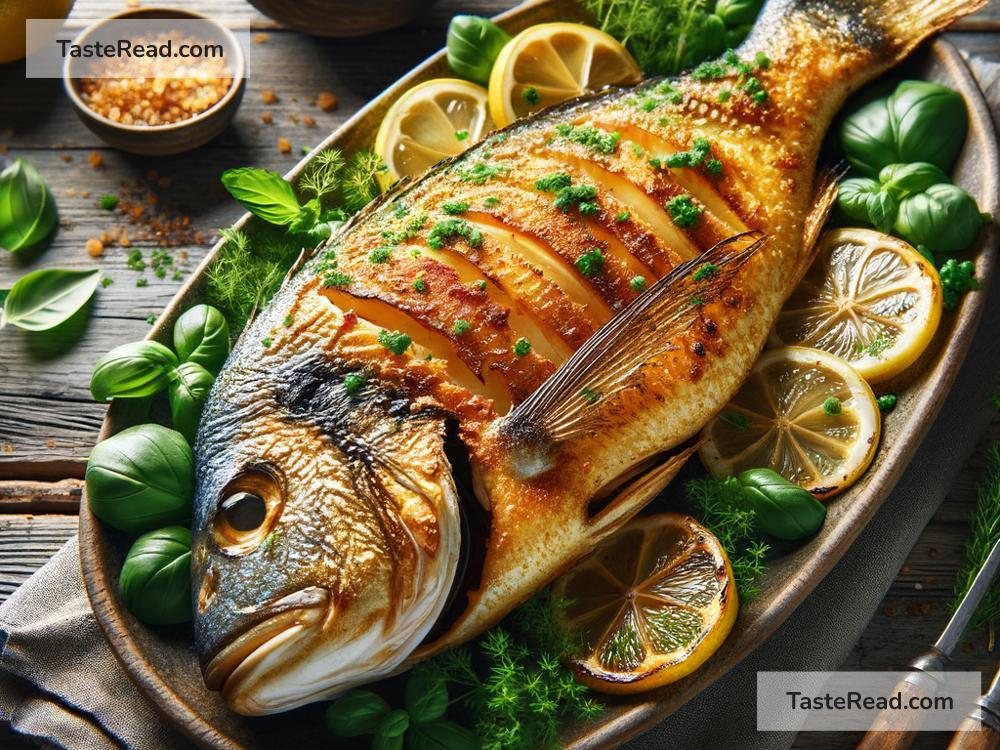The Ultimate Guide to Roasting Whole Fish: Unlock the Secret to Crispy Skin and Moist Flesh
Roasting a whole fish might seem like a chef-level task, but it’s surprisingly straightforward and an excellent way to impress at the dinner table. The key to achieving that drool-worthy crispy skin and succulent flesh lies in a few simple tricks. This guide will walk you through each step, ensuring your fish is cooked to perfection every time.
Step 1: Choosing Your Fish
The first step is selecting the right fish. Freshness is crucial – look for clear eyes, bright red gills, and a clean smell similar to the ocean. While you can roast nearly any type of fish, fattier species like salmon, trout, or branzino are exceptional choices due to their rich flavor and ability to stay moist during cooking.
Step 2: Preparing Your Fish
Once you’ve chosen your fish, it’s time for preparation. Start by ensuring your fish is gutted and scaled. You can ask your fishmonger to do this for you, saving time and mess. Next, rinse the fish inside and out under cold water and pat it dry with paper towels. Dry skin is essential for that crispy outcome.
Now, let’s add flavor. Season the cavity generously with salt and pepper. For an extra aromatic touch, stuff the cavity with fresh herbs (like dill, parsley, or thyme), sliced lemon, and perhaps some garlic cloves. These additions infuse the flesh with subtle tastes and fragrances as it cooks.
Step 3: Scoring the Skin
Here’s a professional tip that makes all the difference: scoring the skin. Make shallow diagonal cuts about an inch apart on both sides of the fish. This technique not only looks appealing but also allows heat to penetrate more evenly, keeps the fish from curling as it cooks, and more surface area means more crispy skin.
Step 4: Roasting Your Fish
Before you start roasting, let’s talk about equipment. A baking sheet lined with parchment paper or a lightly greased roasting pan works great. Some prefer a wire rack on a baking sheet for even crispier skin, as it allows air to circulate around the fish.
Now, preheat your oven to about 400°F (200°C). While it’s warming up, give your fish a light brushing on both sides with olive oil and another sprinkle of salt. This helps achieve a golden and crispy exterior.
Place your prepared fish in the oven and roast it. The cooking time depends on the size of your fish, but a good rule of thumb is to cook it for 10 minutes per inch of thickness. A medium-sized fish typically takes about 15-20 minutes.
Step 5: Checking Doneness
Determining when your fish is perfectly cooked is crucial. The best method is to check the thickest part of the fish with a fork. The flesh should flake easily but still be moist and slightly translucent in the very center. Another sign it’s done is when the eyes have turned white and the skin is irresistibly crisp.
Step 6: Serving Your Masterpiece
Once done, let your fish rest for a few minutes. This brief waiting period lets the juices redistribute, ensuring every bite is as moist as the first. Transfer the fish to a serving platter and garnish with additional fresh herbs or lemon wedges for an extra touch of elegance.
Expert Tips for Success
-
Don’t Overcrowd: Make sure there’s enough space around your fish on the baking sheet. Overcrowding can lead to steaming rather than roasting, affecting that crispy skin we’re aiming for.
-
High Heat: The high oven temperature is key for a crispy exterior and a tender interior. Don’t be tempted to lower the heat; otherwise, you might end up with soggy skin.
-
Use a Thermometer: If you’re unsure about doneness, a meat thermometer is your best friend. The internal temperature should reach 145°F (62°C) for perfectly cooked fish.
Roasting a whole fish is an art and a testament to simplicity in cooking. By following these steps, you’ll unlock the secret to creating a dish that’s not only visually stunning but also a celebration of flavors and textures. So, gather your ingredients, preheat that oven, and get ready to impress your guests with your culinary prowess. Happy roasting!


